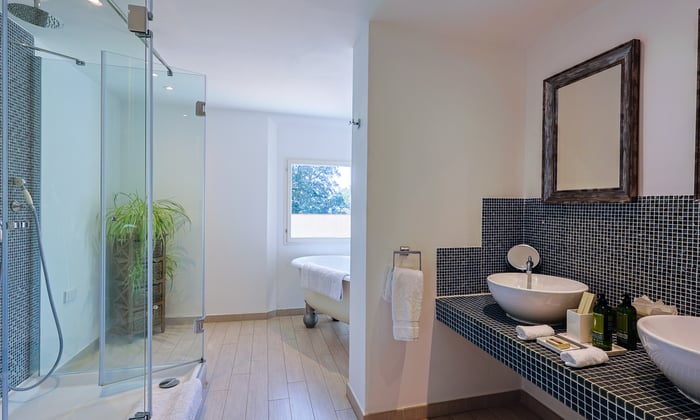Villa La Colline
Right in the heart of the Cote d'Azur with St Tropez only a short drive away, the small town of La Garde-Freinet feels unperturbed by the outside world. Nestled within this Provençal village is Villa la Colline, a farmhouse painted cream with olive green doorways.
Outside this home in the Cote d'Azur, picturesque roads wind through a forest of chestnut groves and cork oaks lead to La Garde-Freinet. The medieval town has preserved its old world charm with field stone houses, traditional street names and a village square surrounded by quaint restaurants. Pop into one of the galleries owned by local village artists. Many artists and writers have fallen in love with the town's understated beauty and have made it their home.
Further afield is the world's most famous port, St Tropez. Beyond the hustle and bustle of Vieux Port are winding lanes of pastel houses, an open-air market on Place des Lices and the superb Pampelonne beach on the Riviera. This villa in the Cote d'Azur is everything a hideaway should be.
Gallery













- Classic Collection
- Owned property
- 4 Bedrooms / Sleeps 8
- Beach / Country Retreat / Golf
Features
- Garden overlooking landscaped common area and water feature
- Outside terrace, ideal for al fresco dining
- Swimming pool (heated during high season)
- Outdoor lighting to the terraces and pool
- Large living area with wood burning fire
- Audio-visual equipment, including Flat screen TV, Bose portal speaker and PlayStation 4 game console
- Starlink Internet and WiFi network
- Four ensuite bedrooms
- Two bedrooms on the lower ground floor, one bedroom on the ground floor and the master bedroom on the first floor
- Large master bedroom with private terraces
- Fully equipped kitchen
- L'Occitane Toiletries
Floorplan
First Floor

Ground Floor

Lower Floor

Cote d’Azur
La Garde Freinet is the sort of picturesque Provençal town you read about in novels, but is hard to find in real life. Yet here it is, in the heart of the Maures Mountains, only a few kilometres from the French Riviera.
The pretty town has two distinctive halves. The older part is clustered around the 16th-century church, with narrow streets, sometimes carved through solid rock. The "newer" part of town has wider streets and 19th-century houses.








